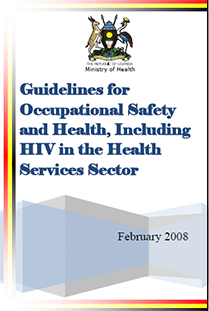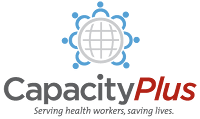Resource Spotlight: Guidelines for Occupational Safety and Health, Including HIV in the Health Services Sector

and Health
The environment where health workers normally provide prevention, treatment, care and support services is rife with different kinds of hazards, including biological, physical, chemical, ergonomic and psycho‐social. Implementation of good safety, health and environmental practices is an important prerequisite for productive and decent work. The Ministry of Health in Uganda has developed a national policy for occupational safety and health within the health services sector that fulfils the purpose of reinforcing the principle of decent work by promoting workplace‐related safety and health for all workers within the sector.
These guidelines target all health workers at the different levels of the health care delivery system and apply to both the formal and informal workplaces within the health sector. This document covers the basic principles that are required to ensure workplace safety and health including hazard identification, risk management, prevention and management of exposures and incidents. In addition, it gives a comprehensive coverage of the management of HIV and AIDS as a workplace hazard within the health sector as well as some other common hazards such as tuberculosis, hepatitis and viral hemorrhagic fevers. Furthermore, the guidelines provide a strategic framework for making a workplace safety and health program fully operational. [from foreword]
View this resource.
The HRH Global Resource Center has other resources on this topic including:
- HIV Infection and Medical Professionals
- Caring for Healthcare Workers: a Global Perspective
- Draft National Infection Prevention and Control Policy for TB, MDRTB and XDRTB
For additional resources on this topic, visit the Work Environment or Infection Prevention subject categories.
Past Resource Spotlights
- 5101 reads




